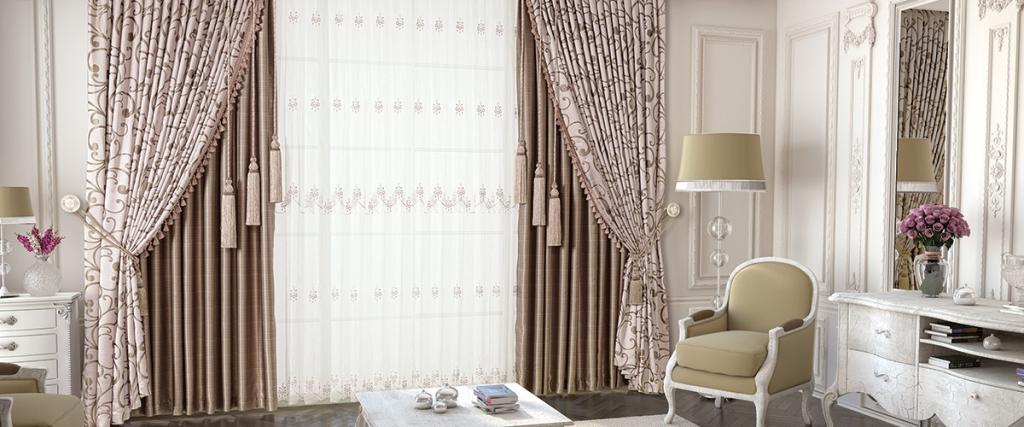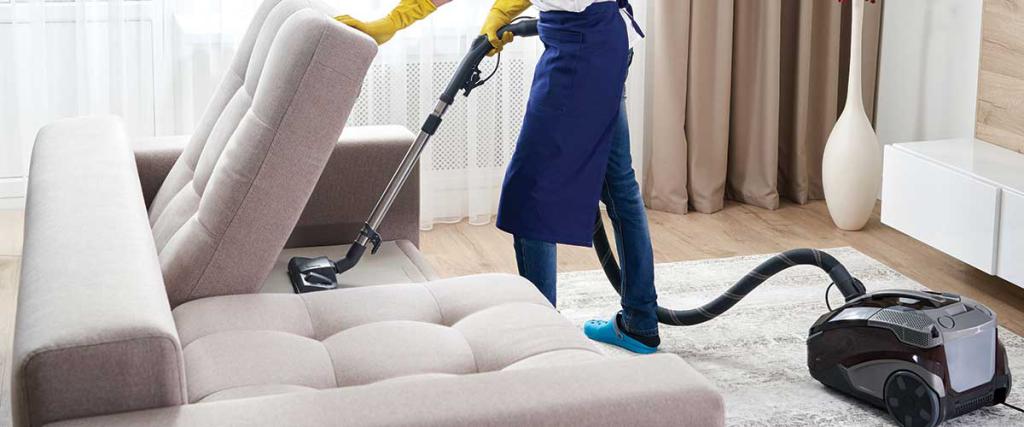
Many times, it is very difficult to choose the correct fabric, so Estética offers a few familiar window treatment situations and recommendations for picking the right fabric:
A wide, long window that needs plenty of coverage: Fabrics with some heft to them will meet your coverage needs. Make simple floor-to-ceiling panel draperies in a heavier-weight fabric, such as velvet, chenille, or a blended fabric that limits the light. An alternative is to line your draperies with lining.
A wide, long window where not much coverage is needed: A swag and cascade (made out of a non-sheer fabric with great drapability, such as silk or blended cotton) that frames the top and sides of a bank of windows is a perfect treatment to provide some dress-up without much coverage. If you want to use a sheer fabric to diffuse the light, choose panels in organza, chiffon, or even lace.
A room with a small window: Think about adding a drapery that covers the window entirely. Measure your drapery so that it extends well past the window’s trim moulding. Then choose a heavier fabric, such as a damask, in a colour that matches (or closely matches) the room’s paint colour. The window treatment helps block air. Matching the fabric with the room’s walls gives the room-enlarging illusion of unbroken wall space.
A very low-ceilinged room: Measure your draperies so they extend from the floor to the ceiling and match their colour to the wall colour. Be sure to install the curtain rod nearly flush with the ceiling. If you want to let in light, choose a fabric whose texture is very light yet crisp, such as sheer and if you like coverage, choose a tightly woven cotton. Using a fabric that features vertical stripes is another nice way you can create a feeling of length and height in a low-ceilinged room.
A small window, the only source of light in a small kitchen: If you have a small kitchen with only a tiny window, you want to maximize the window as much as possible. Consider adding a vertical blind, or if you have the ceiling height, the unpleated curtain in the mediumweight fabric of your choice.
Windows in a formal living room: Pleated curtains look great over sheers in dining rooms, and this treatment lets in adequate light for dining, working or studying. Choose a fabric with a tight weave and even a bit of stiffness, so that they’ll keep their shape.
A bathroom window that needs privacy but still needs natural light: Try a heavier voile, which gives a bit of coverage, yet lets in some light. Create a simple curtain panel with this fabric, and your problems are solved.
You have tons to think about when deciding on fabric for window treatments. Choosing the correct colour, weight, patterns, texture, light-blocking or light-exposing qualities, and the fabric’s durability is just the beginning. If you spend some time considering your options now, when it comes time to look at dozens of fabrics at the store, you’ll have a clearer idea of what will work best for your specific needs.
- Durability: Over time, the sun can damage all fabrics, but silks are especially prone to sun rot. Some of the window fabrics least prone to sun rot are brocades, and cotton canvas.
- Thread count: Generally speaking, curtain fabrics have a higher thread count than fabrics used for making clothes, so curtain fabrics last a bit longer. Some of these fabrics need to be dry-cleaned. We advise checking the fabric tag.
- Pattern / Designs: Patterns or designs plays an important role in the selection process, as these designs or patterns are selected as per the interior like the small room needs small motive designs while bold designs are preferred in big rooms.
- Colour: Generally, inside a room, curtain colours are decided based on flooring, wall colour, sofa colour and other furniture. Colour represents the personal choice and character of the individual, so we always suggest choosing the correct colour for your interior curtain requirement.
- Weave: Plain, twill, satin, or damask weaves are common ones for curtain fabrics. Most printed cotton is plain or twill weave. For example, satin weaves are used to create stripes in some fabrics, and a damask weave is a single-colour, patterned weave.
- Width: Fabric generally comes in one width i.e. 54 inches. Always check out the fabric label or tag to determine its width. You can also find some curtain fabrics that are 72 to 75 inches wide, 90 inches wide, and even some that measure 105 or 110 inches. Please ensure your requirement for curtain fabric may increase or decrease as it depends on the width of the fabric.





